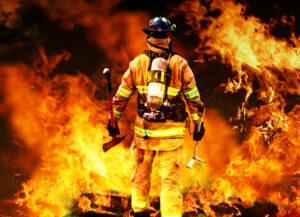On December 21, the Occupational Safety and Health Administration (OSHA) released text of a proposed rule it plans to publish in January 2024 covering the health and safety of emergency response workers. The proposal would update the agency’s 43-year-old fire brigades rule.
It would also update the existing fire brigades standard and expand safety and health protections for emergency responders, including private emergency medical service (EMS) providers, firefighters, and search-and-rescue workers.
According to OSHA, the “fire brigades” standard, first published in 1980, offered protections for a narrow set of industrial and private firefighters, which have become outdated.
The agency has regulated the safety of emergency response workers under a patchwork of decades-old, hazard-specific standards but has never had a comprehensive emergency response standard. OSHA determined that its existing standards fail to address the full range of job hazards emergency responders face, and they don’t reflect the recommendations of national consensus standards for a broad range of workers exposed to hazards that arise during and after fires and other emergencies.
The fire brigades standard would be renamed “emergency response” and would apply to employers that have emergency response teams, as well as emergency service organizations under contract with employers to provide EMS, firefighting, and technical search and rescue. The rule, if adopted, wouldn’t apply to employers that provide disaster site cleanup or recovery following natural disasters such as earthquakes, floods, hurricanes, and tornados or human-made disasters such as explosions and transportation incidents.
The proposal would include major changes for protective clothing and equipment and improvements in safety and health practices that industry generally accepts as standard practice.
The existing standards aren’t aligned with many current emergency response guidelines provided by other federal agencies such as the Department of Homeland Security’s Federal Emergency Management Agency (FEMA) and may even conflict with industry consensus standards in some instances.
The proposed rule would require employers to obtain baseline medical screening for all emergency responders and ensure continued medical surveillance for responders when they’re exposed to the byproducts of fires and explosions more than 15 times annually. The proposal would also include a variety of other requirements to better protect workers whose primary job is emergency response and those with emergency response duties in addition to their regular daily work duties.
“Emergency responders are critical workers in all of our communities, and they deserve protections that keep up with today’s industry practices,” Doug Parker, assistant secretary of labor for occupational safety and health, said in an agency statement. “We are proposing much-needed updates that will expand protections for emergency workers and bring our standards closer to common industry procedures.”
The proposed emergency response standard wouldn’t apply to work activities covered by the hazardous waste operations and emergency response (HAZWOPER) and permit-required confined spaces standards.
OSHA’s work on an emergency response rulemaking began with stakeholders’ meetings in 2014. The agency issued a request for information and received comments in response. A National Advisory Committee on Occupational Safety and Health (NACOSH) Emergency Response subcommittee also collected input and issued a report. A Small Business Regulatory Enforcement Fairness Act (SBREFA) panel reviewed the rulemaking, gathering additional input and issuing a report.
Comments on the notice of proposed rulemaking will be due 90 days after the proposal appears in the Federal Register.

